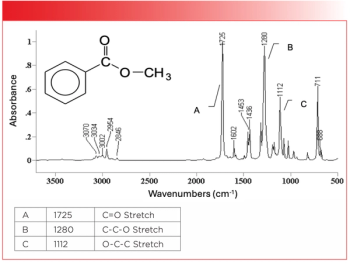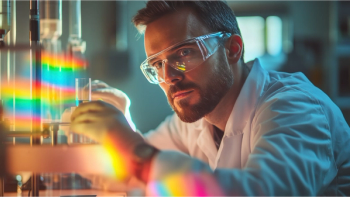
IoT-based Spectral Sensing Brings Real-Time Grape Ripeness Monitoring to Vineyards
A team of researchers from the International Iberian Nanotechnology Laboratory (INL) in Braga, Portugal, has developed an autonomous Internet of Things (IoT) spectral sensing system designed to monitor grape ripening in real-time. The study, led by Hugo M. Oliveira, Alessio Tugnolo, Natacha Fontes, Carlos Marques, and Álvaro Geraldes, was published in Computers and Electronics in Agriculture and introduces a novel approach to non-destructive, in-situ optical monitoring of grape maturity.
As climate variation and changing economic pressures reshape viticulture, the demand for advanced decision-support systems has grown significantly. Traditional methods for monitoring grape ripening involve manual sampling followed by destructive wet-chemistry assays in the laboratory. However, these techniques are time-consuming and offer only a limited snapshot of a vineyard's overall ripening status (1).
To bridge this gap, researchers at INL developed a wireless sensor network (WSN)-integrated IoT spectral sensing system that enables real-time, continuous monitoring of grape ripeness without the need for manual sampling. This system represents a major advancement in precision viticulture by leveraging optical sensing techniques to provide rapid and reliable data on grape development (1,2).
Design and Functionality of the IoT Spectral Sensing System
The newly developed system consists of three core components: an optical module, a host module, and a controller module. The optical module features four photodetectors and four light-emitting diodes (LEDs) with maximum emission wavelengths of 530, 630, 690, and 730 nm. These LEDs illuminate grape berries, and the reflected light is detected by the photodetectors, allowing for real-time assessment of ripening progress (1).
The host module drives the LEDs and processes the analog signals received from the photodetectors. Meanwhile, the controller module ensures system functionality by managing data storage, power distribution, and wireless connectivity. This modular architecture enhances adaptability, allowing researchers to integrate additional sensors or optical filters for extended applications, such as fluorescence-based phenolic maturity analysis (1).
Spectroscopic Analysis and Predictive Modeling
Spectroscopic techniques form the backbone of this IoT system. By analyzing reflectance signals from grape berries, the researchers developed a multivariate partial least squares (PLS) regression model to predict total soluble solids (TSS), a key indicator of grape ripeness. Laboratory tests demonstrated strong predictive capabilities, with root mean square errors in cross-validation (RMSECV) of 2.31 °Brix for the red grape variety Touriga Nacional and 0.73 °Brix for the white grape variety Loureiro (1).
Field trials confirmed the system's robustness and ability to operate autonomously over an extended period. The device successfully recorded spectral changes in grape berries throughout the ripening season, offering valuable insights into the maturation process. Additionally, researchers identified potential challenges related to environmental variability, such as temperature fluctuations and natural light interference, which could influence sensor performance in real-world conditions (1).
Future Industry Implications in Viticulture
The study highlights the potential of IoT-enabled optical sensing systems in viticulture and beyond. The modular nature of the design allows for further adaptation, including the integration of near-infrared (NIR) sensors for broader spectral analysis or fluorescence-based techniques for monitoring anthocyanin levels and other phenolic compounds (1,2).
Beyond grape ripening, the researchers envision applications in vineyard water status monitoring, disease detection, and even real-time quality control during winemaking. By eliminating the need for manual sampling and laboratory analysis, this technology could significantly reduce operational costs while improving the precision and efficiency of vineyard management (1).
The work conducted by Oliveira and colleagues represents a step forward in viticulture technology. By combining IoT connectivity with spectroscopic analysis, their system offers a scalable, real-time solution for grape ripening assessment. As advancements continue, this sensing approach could redefine how vineyards manage ripening, harvest timing, and overall crop quality in an era increasingly shaped by climate variability and data-driven agriculture.
References
(1) Oliveira, H. M.; Tugnolo, A.; Fontes, N.; Marques, C.; Geraldes, Á.; Jenne, S.; Zappe, H.; Graça, A.; Giovenzana, V.; Beghi, R.; Guidetti, R. An Autonomous Internet of Things Spectral Sensing System for In-Situ Optical Monitoring of Grape Ripening: Design, Characterization, and Operation. Comput. Electron. Agric. 2024, 217, 108599. DOI:
(2) Ben Ghozlen, N.; Cerovic, Z. G.; Germain, C.; Toutain, S.; Latouche, G. Non-Destructive Optical Monitoring of Grape Maturation by Proximal Sensing. Sensors 2010, 10 (11), 10040–10068. DOI:
Newsletter
Get essential updates on the latest spectroscopy technologies, regulatory standards, and best practices—subscribe today to Spectroscopy.




